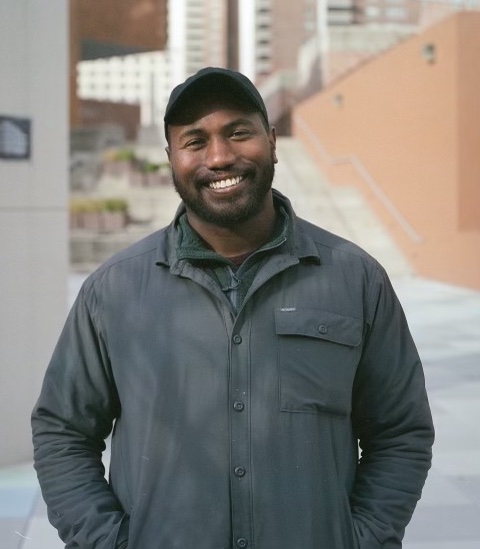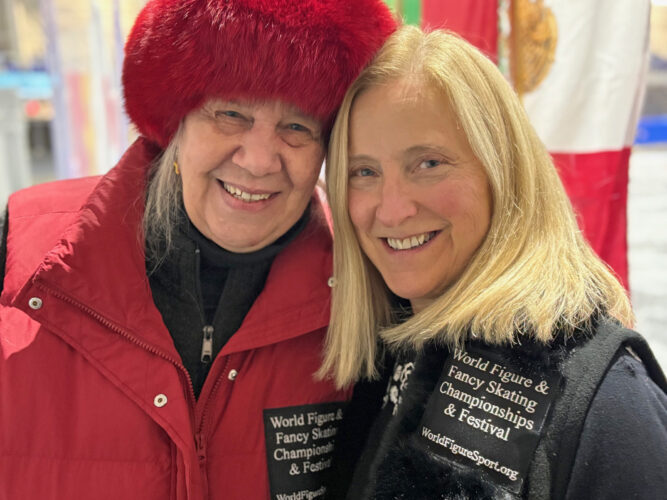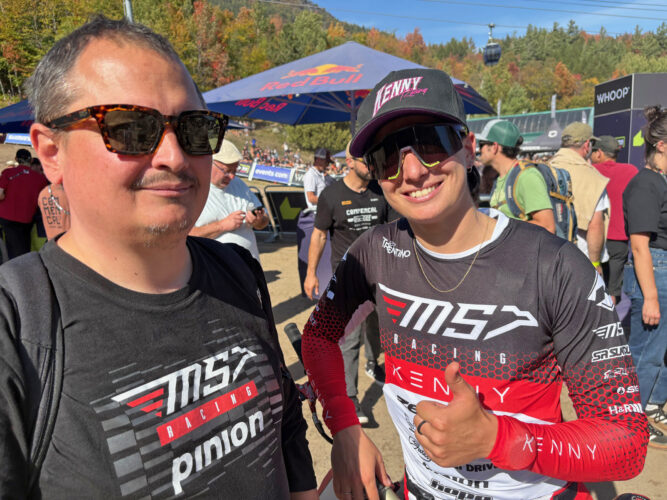ADIRONDACK FILM: The character of light
Justyn T. Davis talks about the art and work of lighting design at the Lake Placid Film Festival

Justyn T. Davis (Provided photo)
When lighting designer Justyn T. Davis discussed light, I thought of the Ancient Greek philosopher Heraclitus and his famous saying about rivers.
The exact phrasing is unknown, but the most common version is, “No man ever steps in the same river twice, for it’s not the same river and he’s not the same man.” The essential point is that everything is always already in flux — the river, the man, becoming and unbecoming. Light, I learned from Davis, is the same.
Davis will be at the Lake Placid Film Festival on Saturday, Nov. 1, giving a workshop at the High Peaks Resort from 3 to 4 p.m. on lighting design and gaffing for film. Alongside Anthony Pierce Clark and John Maher, film tradespeople I wrote about in previous columns, Davis’s participation in the festival is part of an effort to promote local work in the film industry. Gary Smith, chair of the Lake Placid Film Festival and Adirondack Film, has organized a series of events to educate and encourage locals to work in the film trade.
–
Light is general, specific
–
In the most general terms, a lighting designer creates the lighting for a production. It’s only once you investigate the role and meaning of light that the true significance of a lighting designer reveals itself. As Davis said, “The role of a lighting designer is to create the look and feel and aesthetic of a show.” Light sets the mood, it sets the time of day, and the era. Light can imply safety, create fear, enhance, shadow, beautify and uglify. Light can be center-stage, and it can efface itself into anonymity. In the image-based genre of film, light is everything. It does not merely tell the story — light is the story. There is the writer who writes the words of the narrative, and there is the lighting designer who reveals the narrative through light.
“Light is its own character,” Davis said. “It is narrative, an essential part of the story. When I’m at work, I wear headphones so I can hear the words, so I can make sure the light is engaged with the words.”
To be good at lighting design, you need an eye for specificity and difference, and to have the desire to see how each person has their own way of reflecting light, Davis said.
“Like a painter, you have to refine your palette,” Davis said. “I have my way of understanding the light process, which is different from everyone else, and I will light a scene or a person from my specific understanding of lighting. The more refined I am in the way I see light, the better I’ll be at lighting a variety of settings. That’s why I make the comparison to painters.”
For a lighting designer to see the specificity of each person, they must be aware of their situatedness, the unique relationship between the lighter, the lit space and the light itself, Davis said.
–
Equity of light
–
Davis has given workshops at Harvard University on how to light different skin tones.
“The workshop and grant at Harvard were given to us by Dr. Claudine Gay, (former president of Harvard University), during her administration,” Davis said. “It was a way to help a lot of the professionals start to understand how to light different skin tones well.”
The project aimed to create educational materials in medicine that reflect a diversity of bodies. The long-term goal was to ensure that diverse patients are well served by the medical system.
“More inclusive educational material improves patient outcomes,” Davis said.
The importance of the project is immediately clear when looking at skin cancer and the disparity in prognosis between light-skinned and dark-skinned patients. As Trisha Kaundinya and Roopal V Kundu explained in their article, “Diversity of Skin Images in Medical Texts: Recommendations for Student Advocacy in Medical Education,” there is a connection between an underrepresentation of dark skin tones in medical texts and substandard medical treatment for dark-skinned patients suffering from dermatological diseases.
The work has obvious implications for equity in filmmaking — a lighting designer should know how to light different skin tones to light all actors well. If only light-skinned actors are lit well, only light-skinned actors will look good on film. For Davis, the ability to light a diversity of skin tones is part of the art and allure of lighting design — there are infinite ways to see and light the singularity of every tone.
“There isn’t one level of skin tone,” Davis said. “Not everyone’s skin receives light in the same way.”
Lighting, I learned from Davis, is narrative in more ways than one. It can tell the story of a film, it can set the stage for a theatrical performance, and, when shone at the right angle, it can validate the lives of historically marginalized people.
–
Art of recording light
–
The camera technology readily available on smartphones has turned a lot of people into amateur photographers and changed our understanding of the metaphysics of photography. For many of us today, photography is simply recording images. Originally, however, photography was the process of using light to produce images on a light-sensitive surface. Put more simply, photography was the art of recording light.
Before film, before photography, before image and color, there is light. As Davis recounted his roots in photography, it became clear that an artist of recording light will master the art of the image and the moving image.
“The depth of skill involved in lighting is complex, especially when you’re thinking about lighting choices,” Davis said. “Photography gave me a solid foundation. If you understand photometrics and optics, you start to understand how far you can go with your lighting, and you can think about your lighting choices in a more educated way.”
Davis discovered photography through a series of chance encounters, including attending after-school workshops in high school that introduced him to subjects such as biology, chemistry and photography. A teacher also took Davis and his peers to a photography class at Columbia University.
Davis also had strong artistic inclinations in industrial drawing and graphic design, which, when combined with his discovery of photography, hooked him on a path to filmmaking.
“Once I started to understand shadows and light and how you can define images with simple techniques like reducing light, my interests naturally went into filmmaking,” Davis said.
–
Flux, ubiquity of light
–
Davis’s education in light is as ubiquitous as light itself. During the COVID lockdown, he woke up every morning to see the sunrise so he could become more in tune with how light moves.
“Light study is everything,” he said. “The physics and understanding and quality of it are never-ending. During lockdown, I did a light study every day. I took a picture of the same space every day so I could understand how light worked. I started to really understand how light fell and moved, and I became more expressive in my use of light in my photography.”
When I asked Davis what light meant to him, he answered, “Light — it keeps changing,” as though intimating Heraclitus himself. No man ever steps in the same light twice, for it’s not the same light and he’s not the same man.
Learn more
To learn more about tickets and the schedule of the Lake Placid Film Festival, which runs from Oct. 30 to Nov. 2, visit online at www.adirondackfilm.org.


